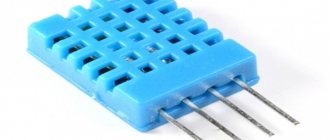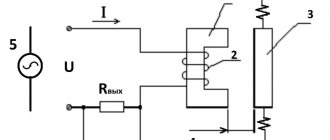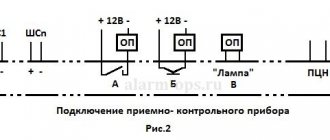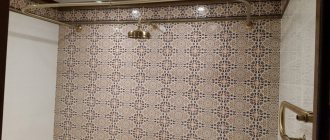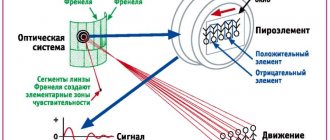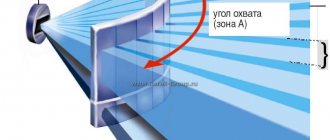Why control humidity?
Air humidity can be absolute and relative. The first number indicates the maximum amount of water in the form of water vapor that can be contained in a cubic meter of air at average temperatures and atmospheric pressure. Relative humidity is the percentage of actual humidity to the maximum possible. Thus, at 20°C, a cubic meter of air contains about 17.5 g of water vapor. If the relative humidity is 70%, then the moisture will be already 12.3 g.
In residential premises, a humidity level of 50–60% is considered normal for humans. Lower values cause inconvenience and discomfort, but with higher values there is a risk of developing fungus and mold.
Expert opinion
Yakovlev Alexey Sergeevich
Electrician with 20 years of experience and extensive experience
Constantly low humidity can lead to dry mucous membranes and dry skin, resulting in an increase in the incidence of the upper respiratory tract, as well as constant skin irritation.
It is especially important to monitor the amount of moisture in special rooms where there are “wet areas”: baths, saunas, steam rooms, toilets. Here the risk of mold and mildew is significantly higher, so forced ventilation is necessary.
Working principle and functions
The operating principle of all fans is identical. The built-in electric drive sets the blade in motion, resulting in the circulation of air masses. The water suspension with the air flow enters the hood shaft and is discharged outside.
Depending on the method of switching on, devices can be divided into 2 types: those with an electronic circuit for starting the impeller and those without it.
| Variety | Principle of operation | Peculiarities |
| Standard | The air blower is directly connected to the switch. It only works when the lighting fixture is turned on. | A classic axial device with a check valve, which is installed between two adjacent rooms. |
| Automatic | These are fans with a humidity sensor and timer, which have an independent connection to the power source. Can have several speeds. | Hygrostats operate for a programmed period of time and are triggered when the permissible humidity threshold is exceeded. The sensor has an upper and lower limit. |
Many manufacturers modify devices, introducing additional features into their functionality.
The most complex version is thermistor models. These are fans with temperature sensors that determine humidity by changes in the thermal conductivity of gases.
How does a humidity sensor work?
The humidity sensor registers the humidity parameter due to the physical effects that occur in its “internals”. When critical values are reached, a signal is sent (closing or opening contacts), which activates the exhaust fan.
On the Internet you can often find the statement that a humidity sensor and a hygrometer are one and the same. This is actually not true. A hygrometer is a device for measuring humidity with an informative scale. The sensor also measures this parameter, but its main task is to provide a signal; it is not suitable for monitoring the amount of water vapor in the air.
Exhaust fans with humidity sensor
The appearance of unpleasant odors in the kitchen and toilet, the formation of fungus and mold on the walls of the bathroom - who among us is immune from such unexpected surprises? The operation of natural air ventilation systems, which are installed in every apartment building, helps to avoid such situations.
But if the system does not fully cope with the task, you can perform forced air ventilation by installing an exhaust fan with a humidity sensor in the kitchen, bathroom or toilet. It will not only eliminate all the listed inconveniences, but will also make sure that they no longer bother you.
Exhaust fans with a humidity sensor: choosing a model
The household equipment market offers 4 types of exhaust fans, including radial, centrifugal, roof and axial. It is the latest devices that have gained great popularity among apartment owners due to their ease of installation and very high efficiency indicators. However, despite the fact that models from the same line may look almost identical, their classification is quite different.
- Performance. The most important criterion to consider when purchasing an exhaust fan. If the model is weak, there will be little benefit from installing it in a large kitchen; however, too powerful equipment installed in a small bathroom will not live up to expectations, since it will burn an unreasonably large amount of electricity.
- Noise level. The operation of some exhaust fans is impossible not to notice: there are models so noisy that their vigorous activity may well give you a headache. That is why pay attention to an exhaust fan with a humidity sensor and a noise level of no more than 25 dB.
- Safety. Any household appliance must operate in such a way as not to cause inconvenience to the “owners”. The same principle applies to a fan: if water gets into the device, a short circuit is inevitable, and therefore the equipment case must be waterproof.
- Check valve. This seemingly insignificant detail has an undeniable advantage: it prevents odors from outside from entering the room. And this is especially important if the fan is not very powerful, and the air enters the room from the supply ventilation ducts.
Functionality of exhaust fans
Such a fairly simple device as an exhaust fan also differs in functionality, which includes two important options:
- timer: incredibly easy to use and makes life easier for Homo Sapiens. As soon as the humidity in the bathroom or toilet exceeds the desired value, the device turns on and works as long as it is assigned;
- humidity sensor: the operating principle of a fan equipped with this option is similar to the reaction of a smoke sensor: it independently recognizes the amount of steam in the room and starts as soon as the humidity readings exceed the specified parameters.
Tips for choosing an exhaust fan with a humidity sensor
Any household equipment is primarily designed to make our lives even more comfortable. That is why it is so important to choose it correctly, so as not to pay for hasty decisions and missed opportunities.
If you need an exhaust fan with a humidity sensor, you can buy it at! We offer a wide selection of household equipment that will delight you with reliability, performance, safety and variable prices.
Professional consultants will tell you in detail about the chosen model and its characteristics, responsible drivers will deliver the goods to the specified location, and a conveniently located pick-up point will allow you to quickly and easily buy an exhaust fan with a humidity sensor. The operation of exhaust fans purchased from Guarantee guarantees a favorable microclimate in the apartment and a good mood for its residents!
Configuration options
The general principle of operation of the combination of ventilation and humidity sensor remains the same for all devices, but the design may be different. Most often it is performed in two versions:
- The sensor is combined with a specific fan. When triggered, one device is launched, installation is carried out either in a single housing or side by side. It is advisable to use in small spaces such as bathrooms or toilets.
- The sensor is connected to a common controller, which controls a block of several fans, which can be placed in different areas or even rooms. A classic example is a “smart home” system, where several reading devices via a gateway control the operation of exhaust ventilation.
Do you use humidity sensors?
Yes
100%
No
0%
Voted: 1
Connecting the device to the network
After installation of the housing, electrical work is performed. To connect a bathroom fan with a humidity sensor and timer, you need to prepare the mounting points and cable entry. Using terminal blocks (must be included), the cable is connected to the fan. The main connection circuit is fixed with special fasteners to the device structure. When carrying out electrical work, it is important to take into account the compliance of the wiring parameters of the local network. As a rule, humidity fans are provided with double electrical insulation, so grounding is not necessary.
Installing a device with a humidity sensor
The device is installed in the window of the ventilation shaft, selecting the optimal diameter in advance. An electronic circuit and software are used to communicate with the humidity sensor.
A smart device that controls the climate in the room can be simply mounted on the wall or placed in one of the suggested places:
- It is not recommended to install the sensor closer to the ceiling, as dry, light air accumulates there;
- You cannot place a device sensitive to humidity next to the fan, as it will show distorted results;
- The sensor should not be covered by bathrobes, towels or clothing - access must always be open to obtain real values.
The optimal location is considered to be at a level of 1 m from the floor, fixed to a free space on the wall. Since bathroom spaces are small and control must be objective, the device is installed next to a switch or cabinet.
Calculation of the minimum required power of the device
Maintaining a comfortable microclimate in the bathroom is possible by quickly and optimally cleaning the air from excess humidity. To do this, you need to choose a fan with optimal performance.
- We determine how much moist air the hood moves in a certain unit of time.
- According to the norm, the air environment of the bathroom should be updated 6 times within an hour. For intensive use, a multiplying factor is used in calculations.
- First, determine the volume of the room by multiplying the overall dimensions of the room. V=(length*width*height) cubic meters.
- We multiply the hourly frequency accepted by sanitary standards (6) by the volume of the room: 6*V. If necessary, multiply the product by a multiplying factor (from 1.2 to 1.75).
The resulting figure shows what performance a fan with a humidity sensor is needed in a given bathroom.
Connection features
The sensor is installed without additional wiring. You should be more careful when installing the fan.
- Before installation, clean the ventilation duct.
- Study the attachment scheme - inside the shaft or on the cover.
- The performance of the system is determined by deflecting the flame of a lit match or candle.
- Electrical connections are protected from moisture.
Additional functions
In addition to a humidity sensor and check valve, some fan models include:
- Timer. You can program the device to operate for 2-30 minutes after a power outage.
- Motion Sensor. Reacting to human movement, such a fan will start working automatically.
- Constant ventilation function. It ensures long-term operation of the fan in low power mode.
- Backlight.
- Ability to adjust power.
- Built-in clock.
